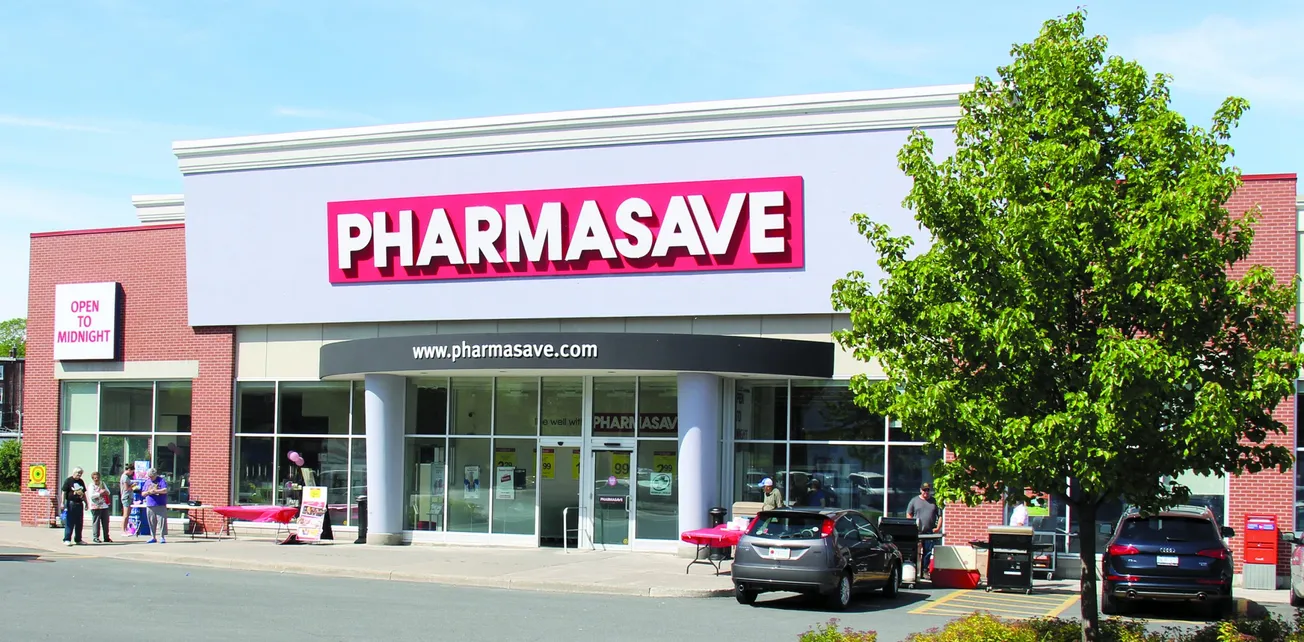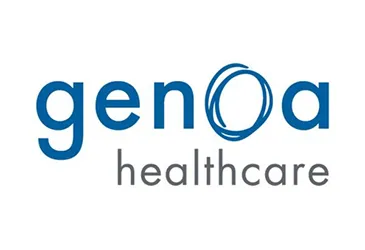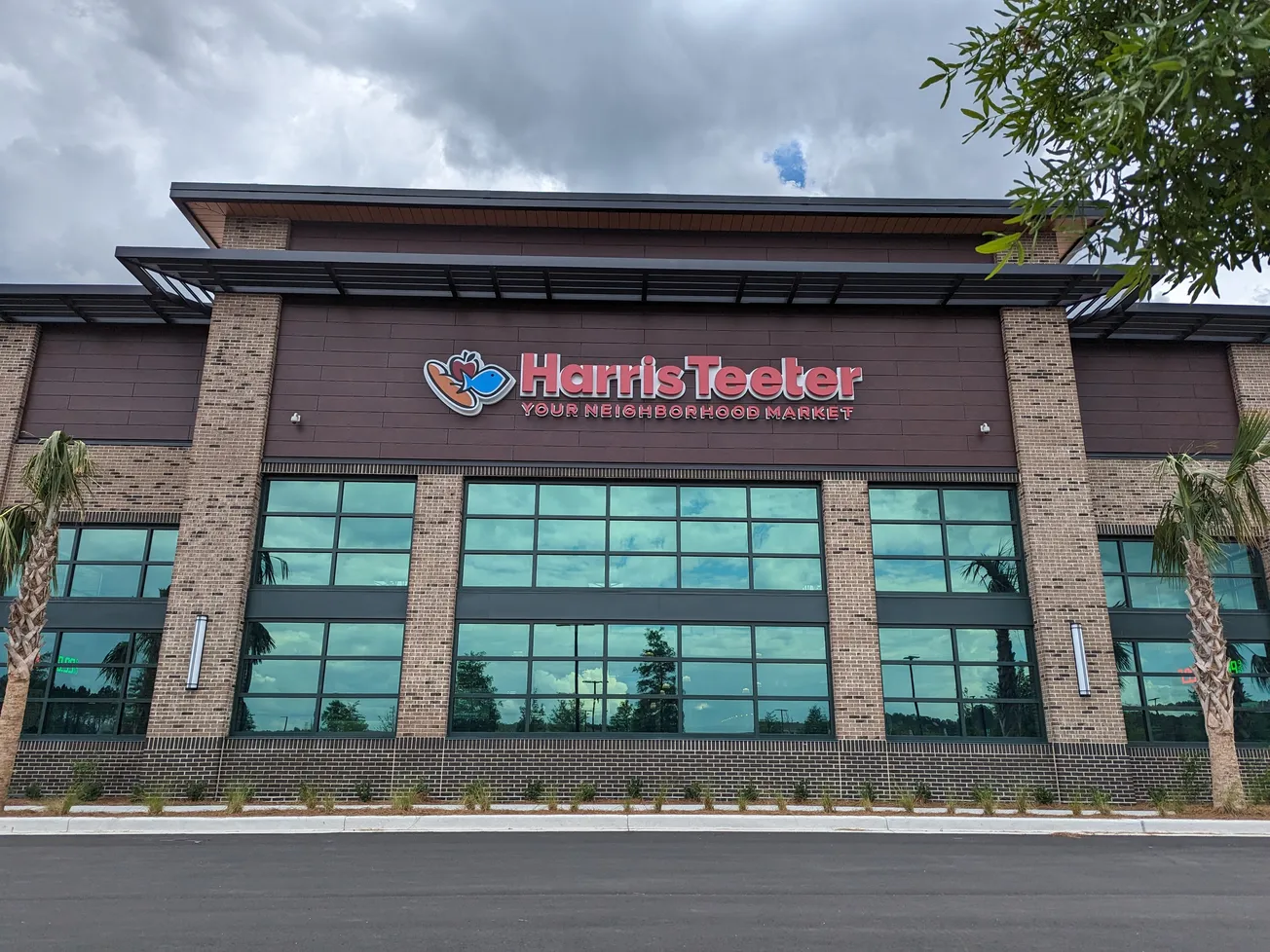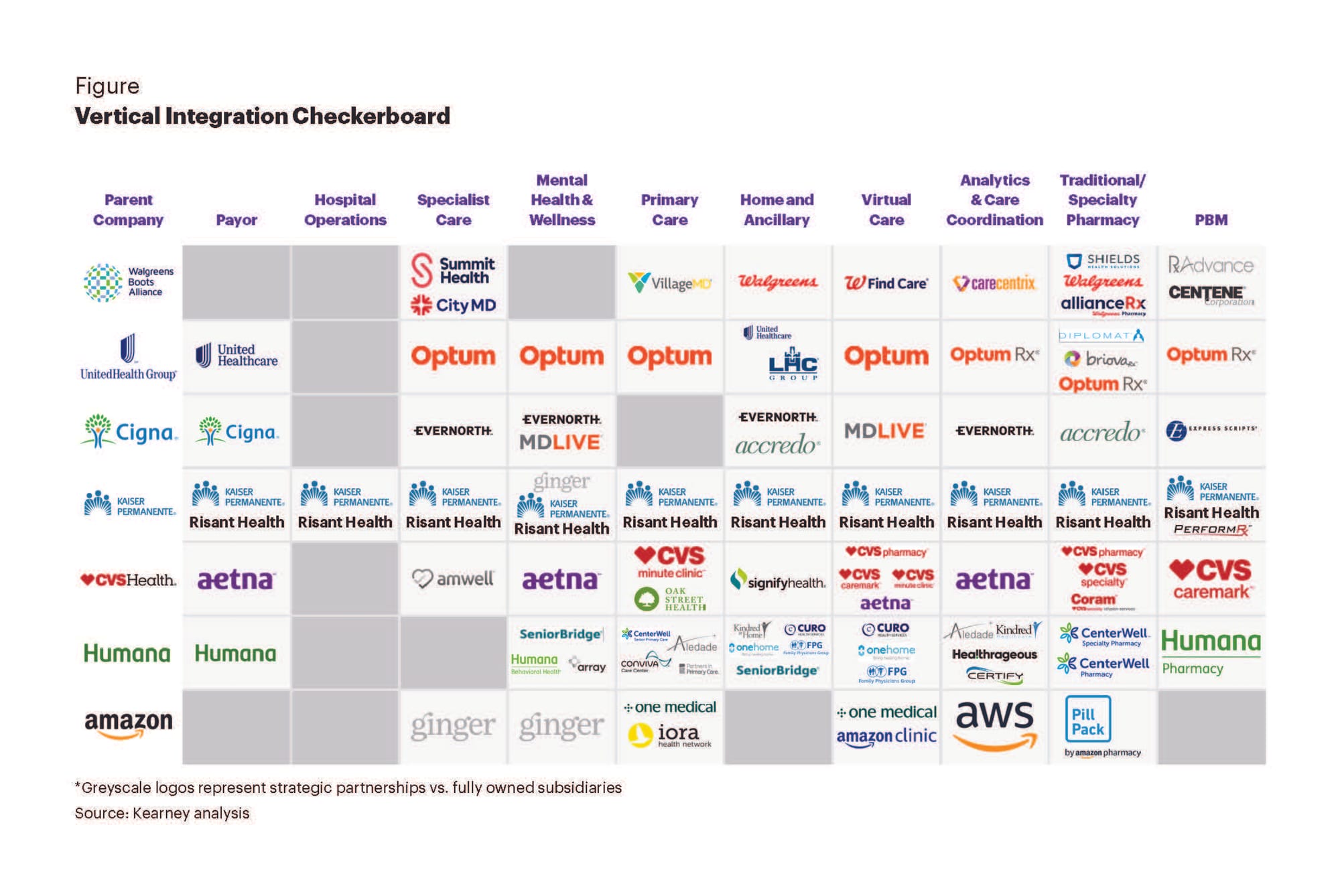
In the past few years, “vertical integration” has been a hot topic for leaders in all health care businesses, from pharmacies to insurers to hospitals.
Health care parent companies, including pharmacies like Walgreens Boots Alliance and CVS Health, payors like UnitedHealth Group, Cigna and Humana, and even retailers like Amazon, are racing to build a vertically integrated patient experience that spans the health care journey.
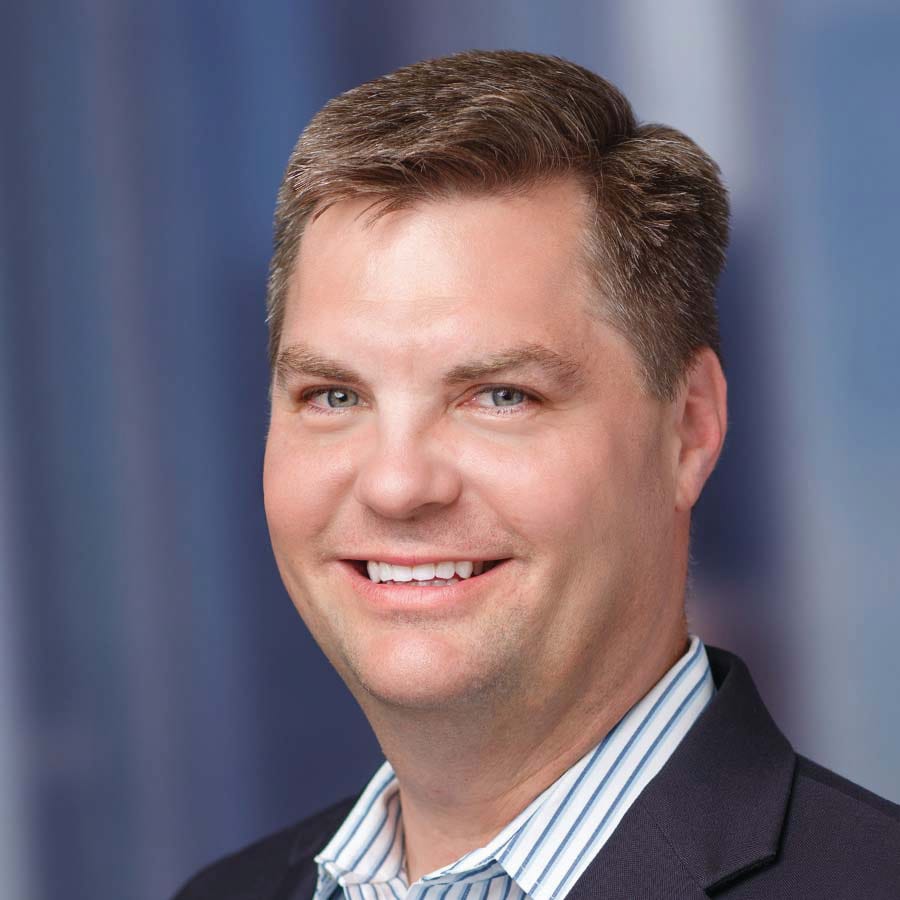
Todd Huseby
Looking at the current state of parent companies’ acquisitions and partnerships helps us understand how vertical integration has already changed the health care landscape and how companies can adopt a strategic and operationally robust approach to building sustainable health care companies that will best serve patients, employees, communities and shareholders long term.
The vertical integration ‘checkerboard’
The graphic above is a checkerboard that shows how parent companies are moving toward vertical integration. It also makes clear what gaps still exist.
Each parent company’s strategy looks different, based on its core industry, its particular starting point and its direction of travel. A pharmacy chain rolling up assets will look different than an insurance company adding assets, which will look different than a digital retail company’s assets. For example, CVS Health had, until recently, been focused on backward integration with limited focus on care delivery entities, while Walgreens had taken a different approach with a more aggressive push into care delivery. Another example: Cigna is strong in several areas but lacks a sizable primary care arm. Given the state of acquisitions, it’s reasonable to imagine that Cigna may make acquisitions to expand into primary care. And while retailers like Amazon dominate headlines about innovative health care M&A, several other key players are also building comprehensive vertically integrated businesses.
It’s also important to note that not every box on the checkerboard is equal to others. Some players filling these roles are far more robust and complete than others; that truth comes through in the patient experience and the degree of patient access.
How to take an intentional approach to vertical integration
As the checkerboard highlights, we have seen many acquisitions in recent years. A key question is: Who benefits from these rapid acquisitions? Who really wins in the race to “fill in” the checkerboard? Competitive forces push companies to acquire faster, maybe adding risk to shareholders’ capital unless there’s a clear plan for delivering value. Sure, the acquired companies earn a lot of upside in the short term, but acquirers, employees and patients may lose in the long term if the plan isn’t clear or execution isn’t crisp.
There’s a lot of opportunity in health care right now. For companies going on the offense, it’s vital to identify why they are making acquisitions and to get a clear strategic plan to create value from vertical integration. Being defensive, buying a company to block a competitor from making the acquisition, is generally not a strategy we would recommend, but we fear it may be occurring in some M&A cases.

Rodey Wing
Here’s why a clear and operationally robust strategic plan to value is essential in health care M&A: Health care acquisitions are people and asset heavy. Consider that when a company acquires a network of doctors’ offices, the value is in the practitioners who operate the offices, the patients who rely on them and the spaces where they practice. Integrating these assets into a large health care company with an improved patient experience and improved health outcomes takes finesse; it’s not as narrow as plugging in a new technology. Doing this right, and creating value along the way, is enormously complex. A strategic plan, much less an operationally robust one, is only the first step.

Health care parent companies have a long road ahead to stitch these new acquisitions and partnerships into an experience that feels cohesive for patients and sensible for employees, and will be accretive for shareholders. The eventual winners will have shown tremendous discernment in their strategic acquisitions and clarity in their integration plans.
Focus on integration
From a value creation perspective, the most critical time in health care M&A is immediately after the transaction. The key to success for patients, employees and shareholders is operationalizing the acquired company swiftly. The glow of an acquisition will fade quickly if the new asset does not promptly become an integral part of the acquiring company.
A dim scenario is making an acquisition and doing nothing with it. Left alone, an asset has a high risk of deteriorating quickly. Employees will leave, strategic investments will dry up and, within only a few years, the asset will be worth materially less and be more challenging to integrate.
The antidote? Move quickly to integrate acquired assets. The acquired company should be an active and positive addition to the existing patient care ecosystem as fast as possible.
Stitch together a consistent patient experience
As parent companies ambitiously create an end-to-end patient journey, customers will likely come to expect and demand a seamless patient experience. As more and more companies purport to offer a complete solution, customers will become more educated about the differences among the available options. That’s why “just checking the box” might serve a parent company in the short term as visions are painted, but serving patients well and delivering results is what matters in the long term.
In summary, there is a frenzy of vertical integration occurring in U.S. health care. The most successful health care companies will take a thoughtful, intentional, forward-looking approach that prioritizes shareholder value, patient experience and careful integration. Being methodical, deliberate and focused will increase the odds of success.
Todd Huseby is a partner in the health practice at Kearney, a global strategy and management consulting firm. He can be reached at todd.huseby@kearney. Rodey Wing is a partner in the health practice at Kearney. He can be reached at rodey.wing@kearney.com.


